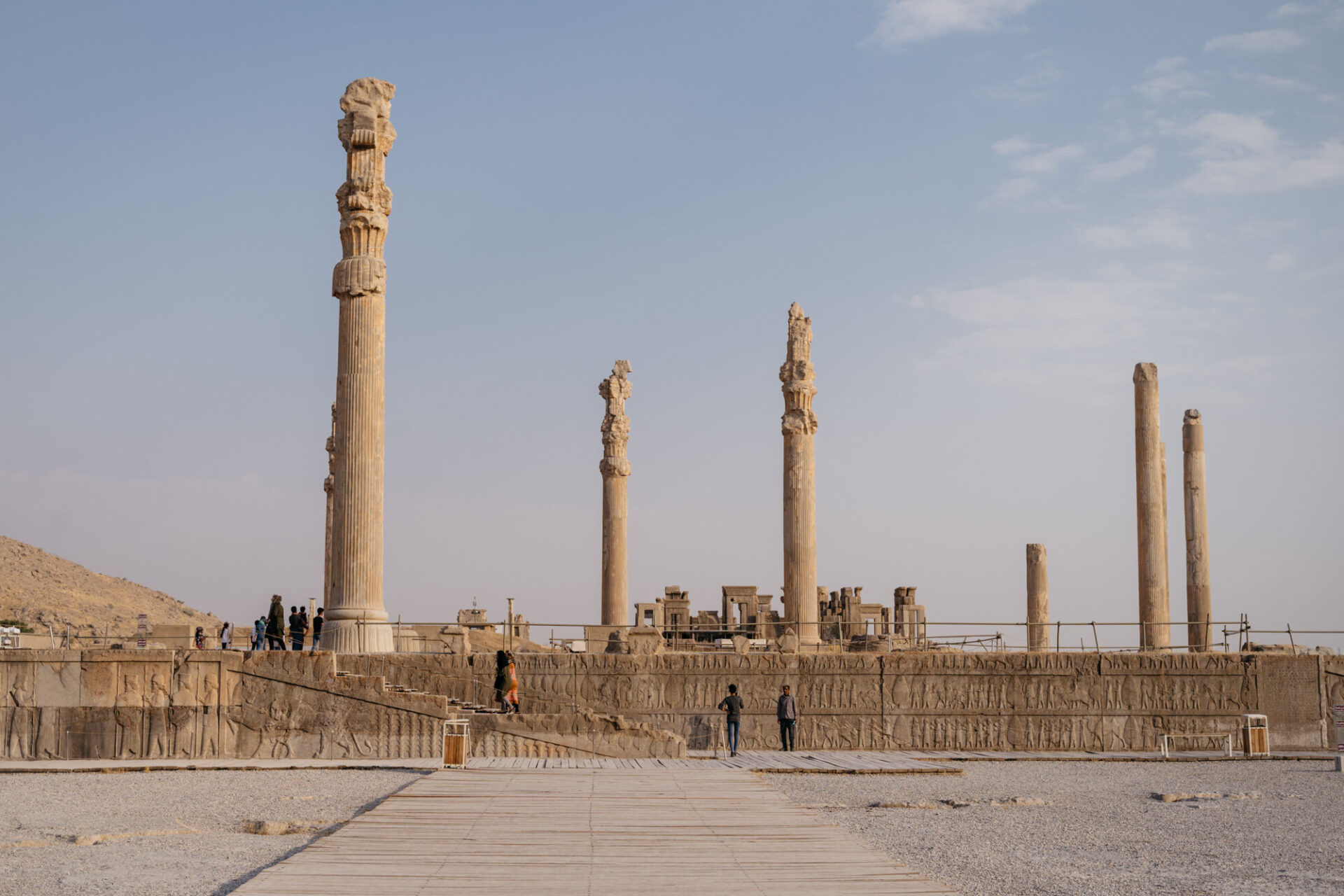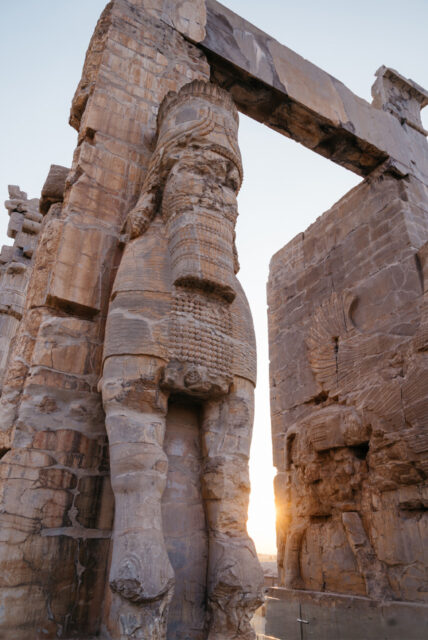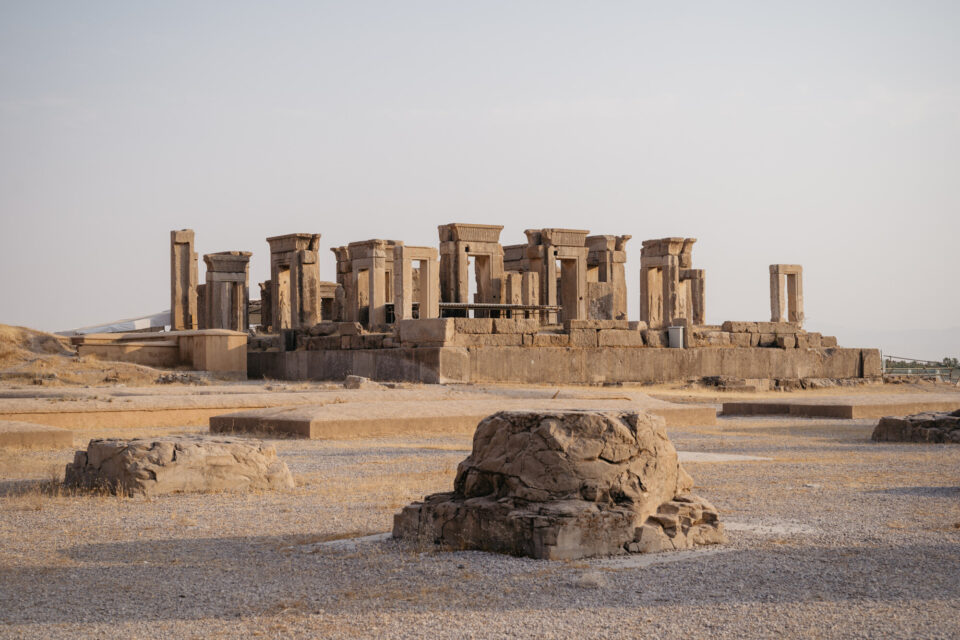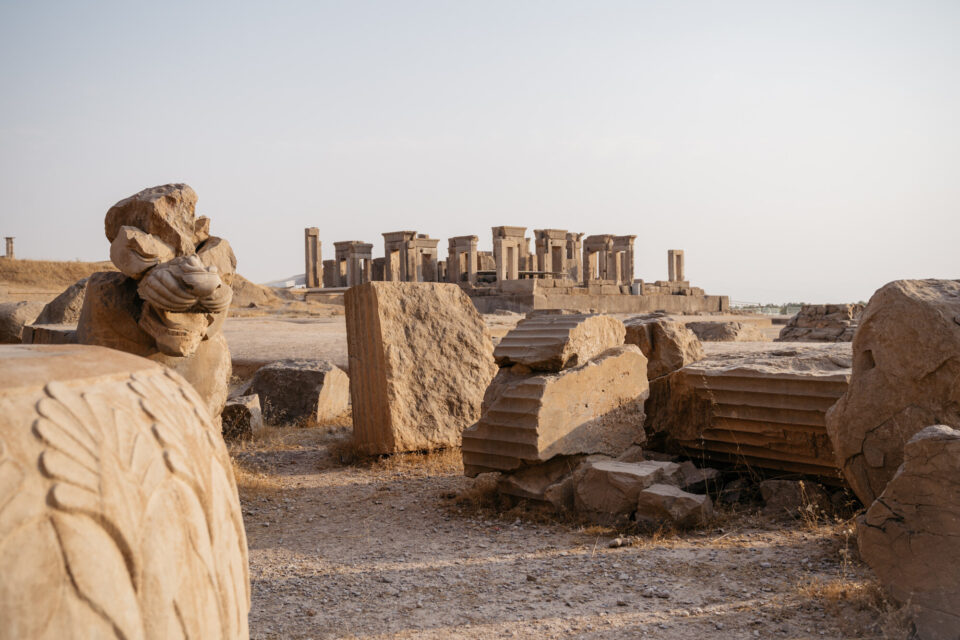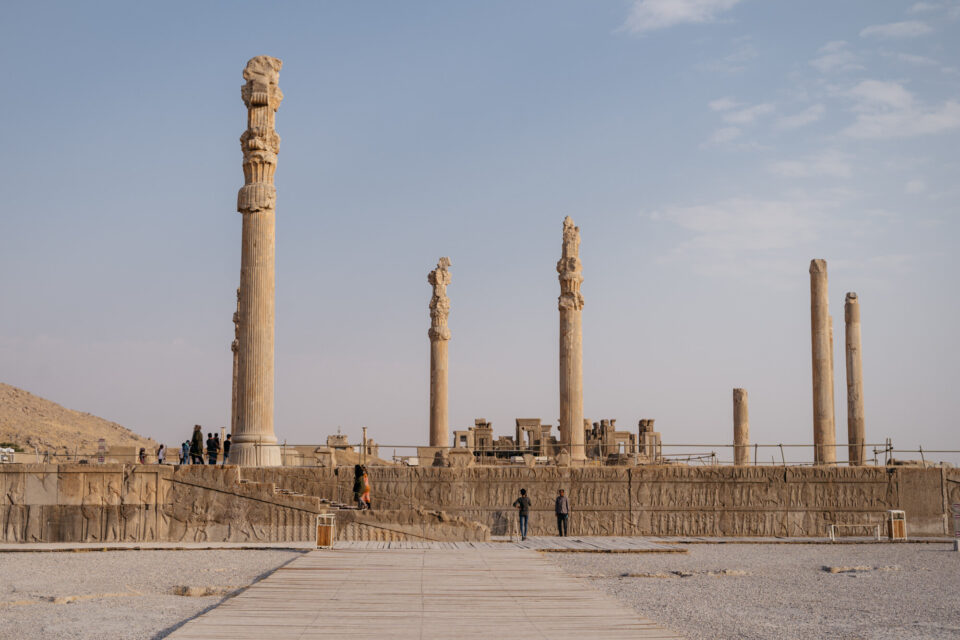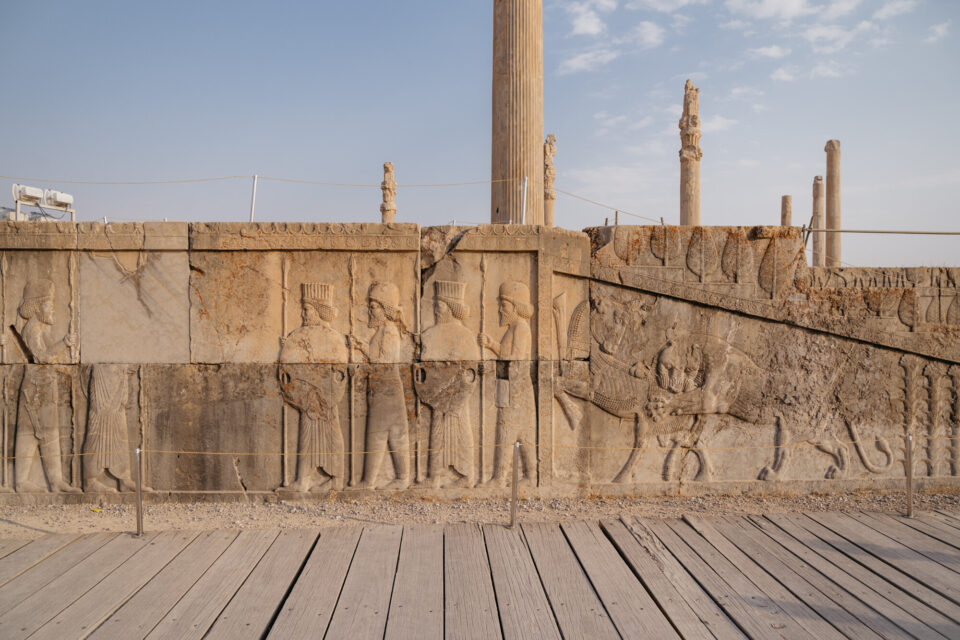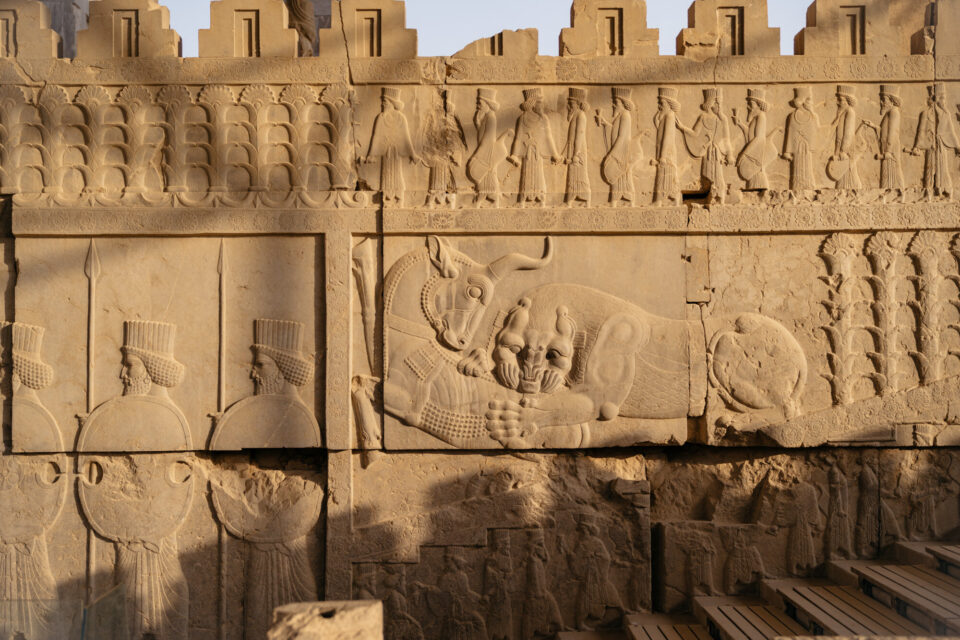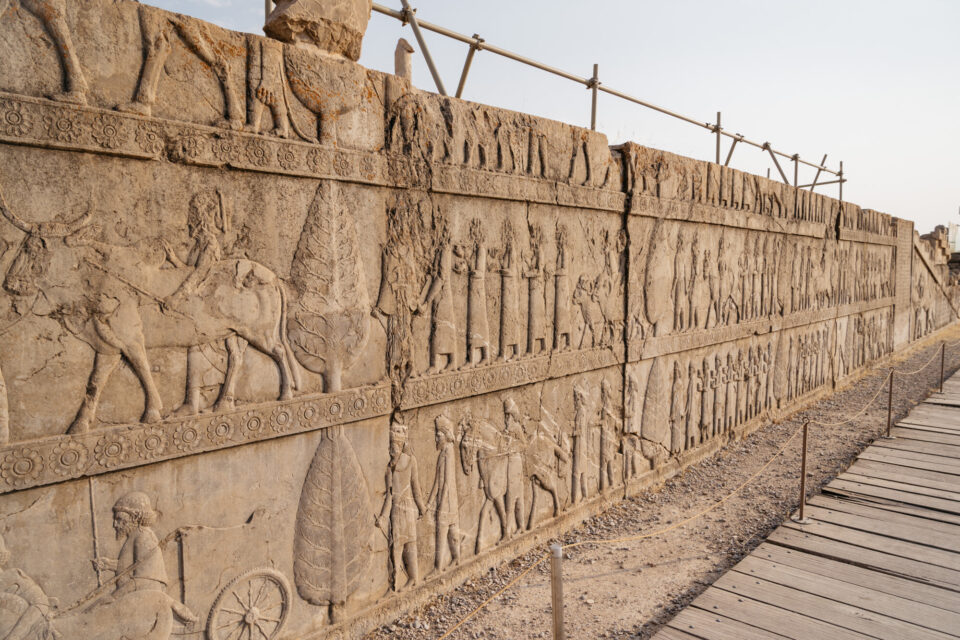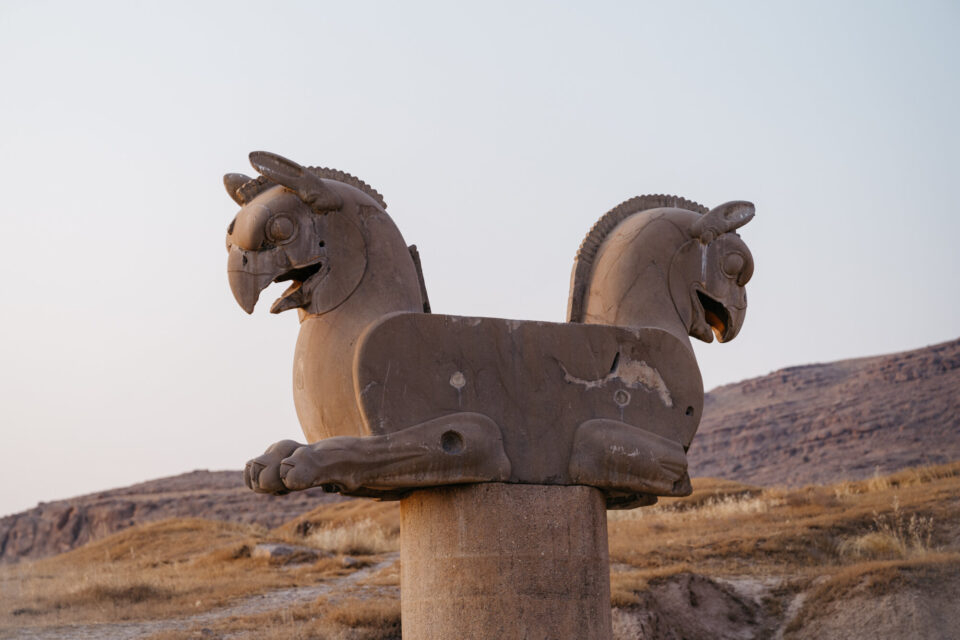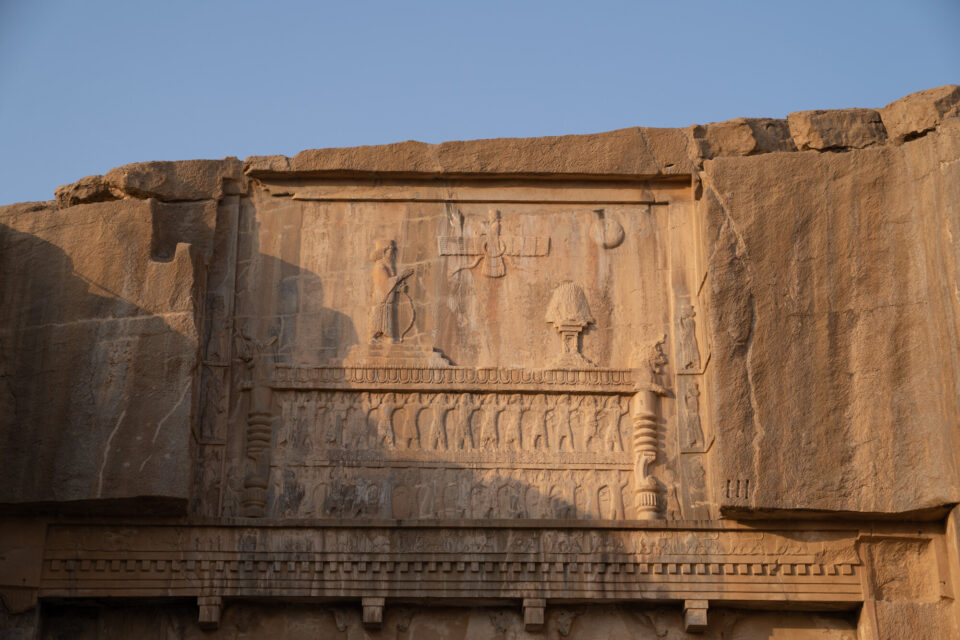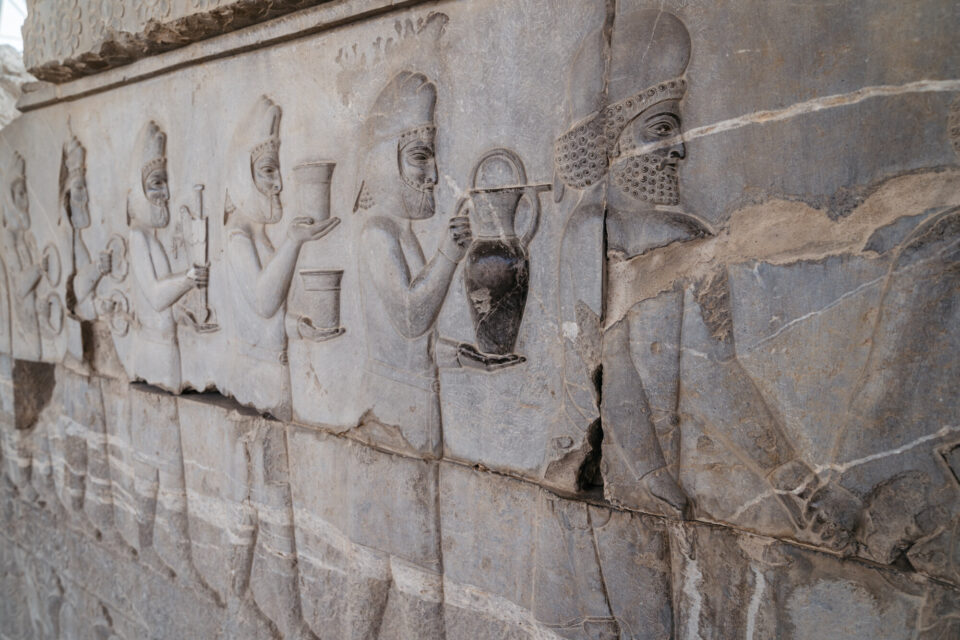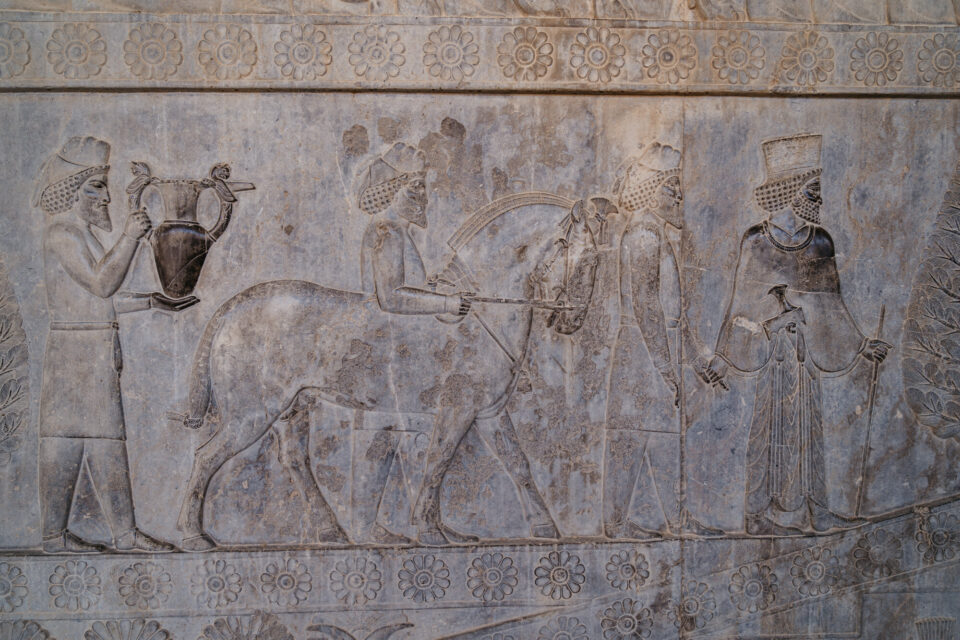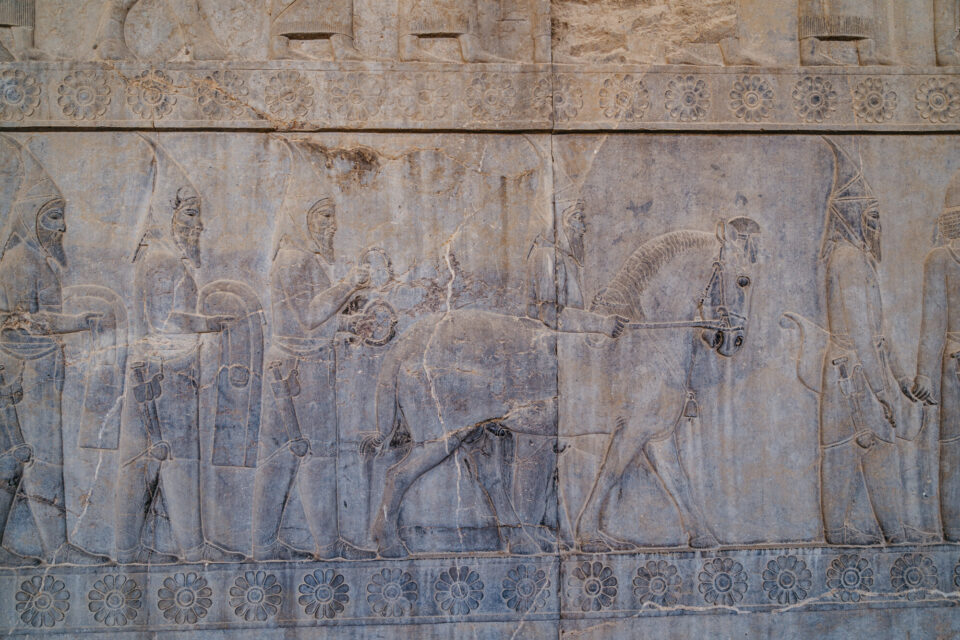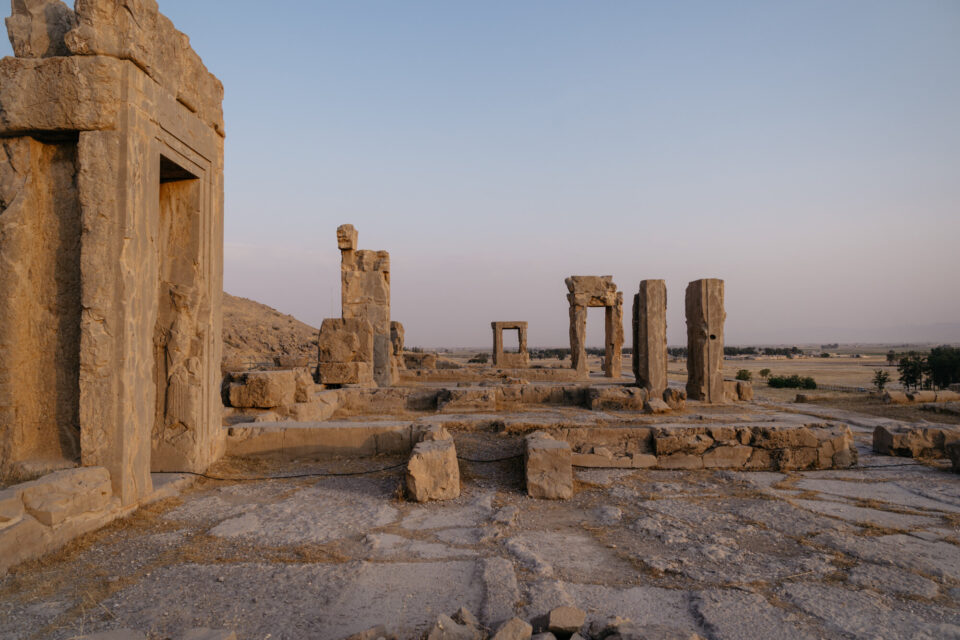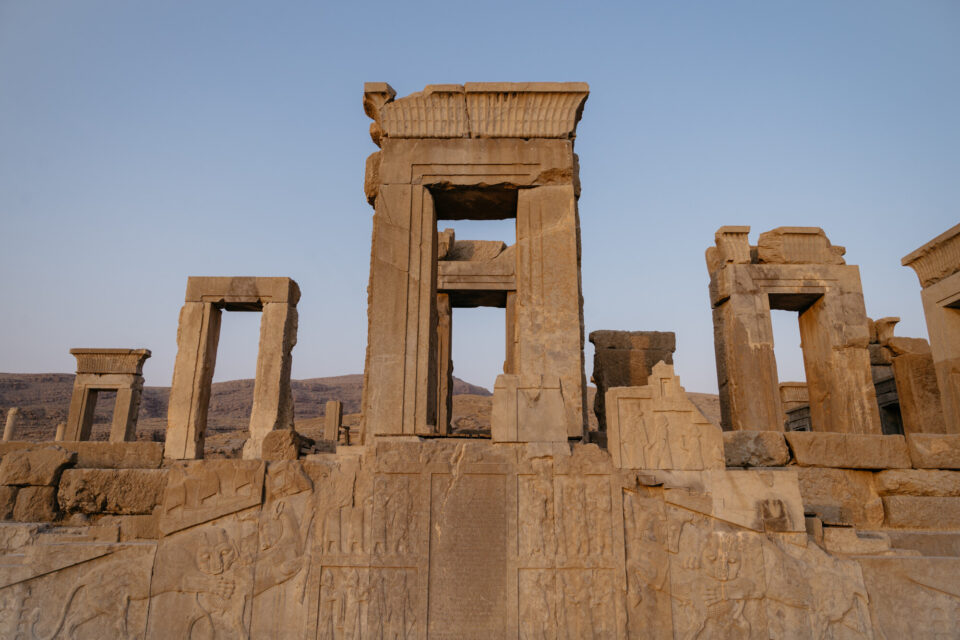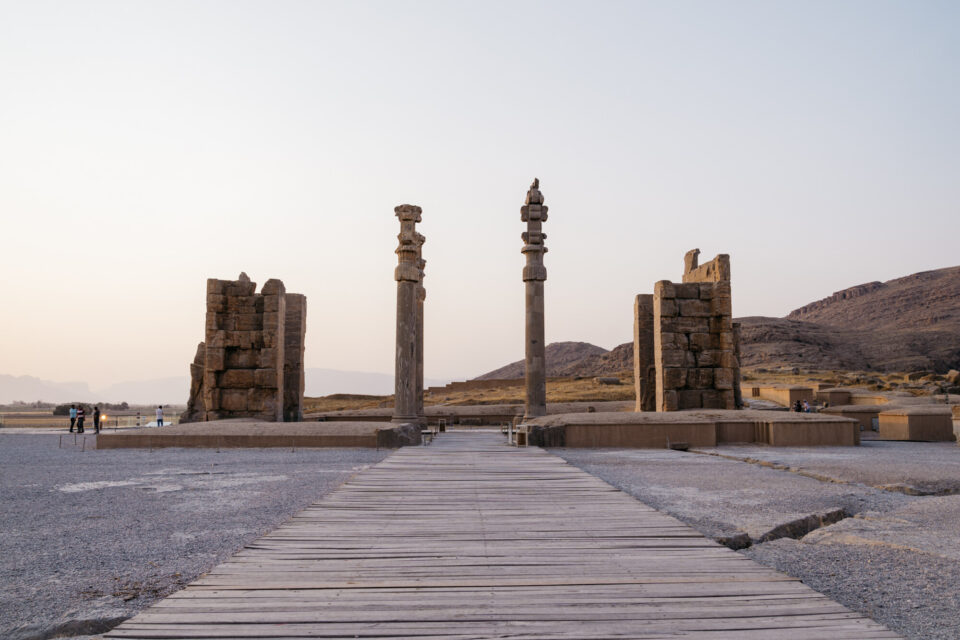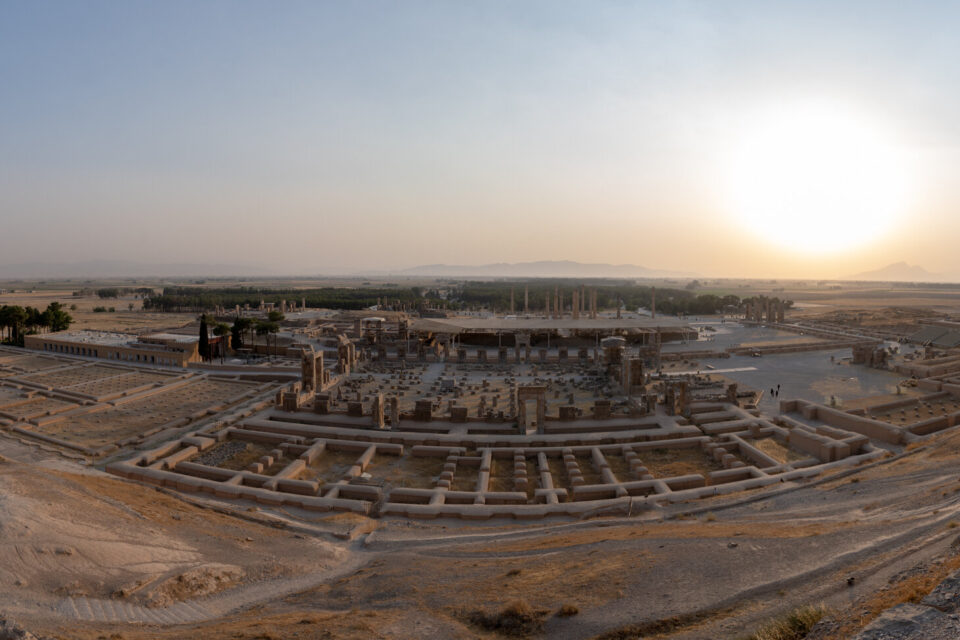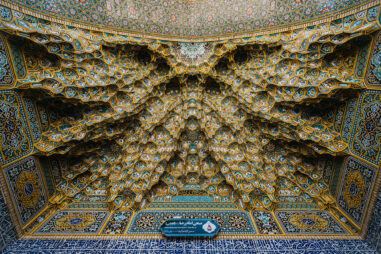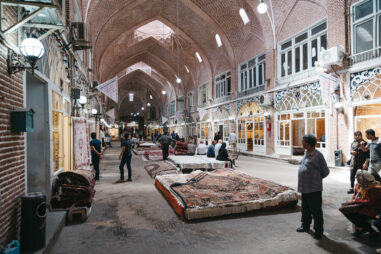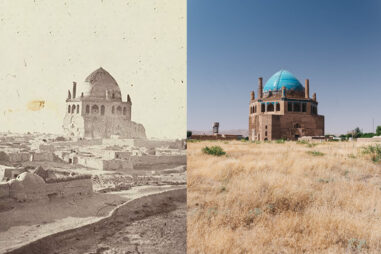
Not far from Shiraz in southern Iran lie the ruins of Persepolis, the capital of the Achaemenid Empire (550–330 BC). At its height around 475 BCE, the Achaemenid Empire ruled over 44% of the world’s population, the highest figure for any empire in history.
The name Persepolis, is a compound of the Ancient Greek words Perses and polis, meaning “the Persian city” or “the city of the Persians.”
Persepolis’s function appears to be mostly ceremonial and was possibly only occupied seasonally. The bas relief sculptures that adorn much of the flat surfaces of Persepolis show the peoples of the world bringing gifts or tribute for the Achaemenid kings, who included Darius I, Cyrus the Great, Xerxes and Artaxerxes.
On these we can see Lydians and Armenians bringing their famous wine, Indians with gold and a buffalo, Nubians from southern Egypt present an elephant’s tusk and an okapi, and numerous other delegations from bringing gifts from across the Persian empire.
The Achaemenid’s were known for their pluralistic outlook and religious tolerance. When Cyrus the Great took the throne he famously said that he would “respect the traditions, customs and religions of the nations of my empire and never let any of my governors and subordinates look down on or insult them. I will impose my monarchy on no nation. Each is free to accept it, and if any one of them rejects it, I never resolve on war to reign.”
The Achaemenids were Zoroastrians; one of the world’s oldest continuously practiced religions and Persia’s dominant religion before the arrival of Islam in the 7th century.
Zoroastrianism is a ‘multi-faceted faith centered on a dualistic cosmology of good and evil and an eschatology predicting the ultimate conquest of evil. Historical features of Zoroastrianism, such as messianism, judgment after death, heaven and hell, and free will may have influenced other religious and philosophical systems, including Second Temple Judaism, Gnosticism, Greek philosophy, Christianity, Islam, the Baháʼí Faith, and Buddhism’ (Wikipedia).
The signs of Zoroastrianism can be seen throughout Persepolis. We see the Faravahar – a depiction of a winged sun disk with a seated male figure in the centre – on several bas reliefs including on the nearby tombs.
Around 330BC, the Achaemenid Empire was destroyed by the armies of Alexander the Great as they rampaged eastward. Persepolis was burnt to the ground. According to the Ancient Greek historian Diodorus of Sicily:
Alexander described Persepolis to the Macedonians as the most hateful of the cities of Asia, and gave it over to his soldiers to plunder, all but the palaces. It was the richest city under the sun, and the private houses had been furnished with every sort of wealth over the years. The Macedonians raced into it, slaughtering all the men whom they met and plundering the residences; many of the houses belonged to the common people and were abundantly supplied with furniture and wearing apparel of every kind….
Today, we are left with these ruins which still have many stories to tell. To see what Persepolis would have looked like before it was destroyed by Alexander, I have included a video further down that is worth watching.
